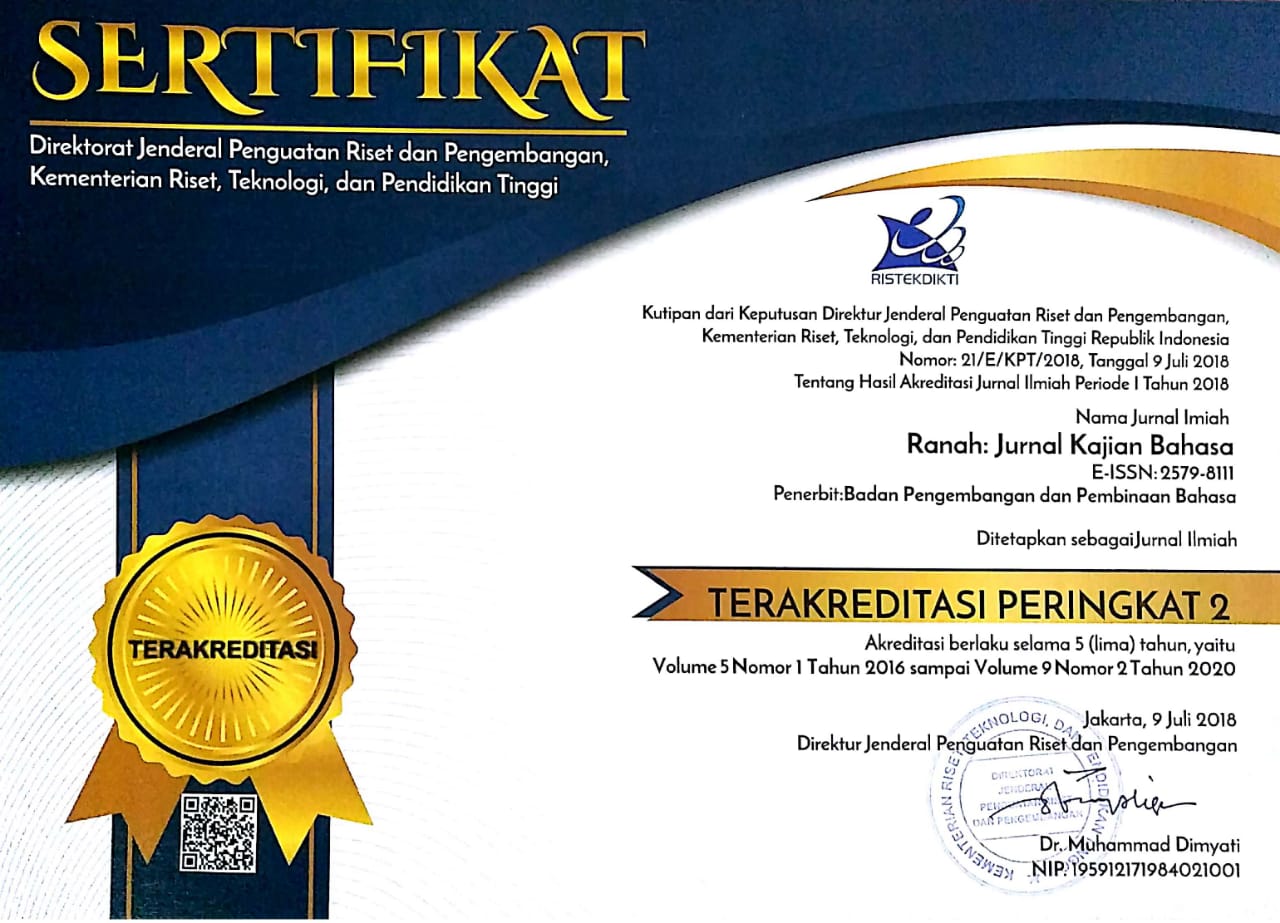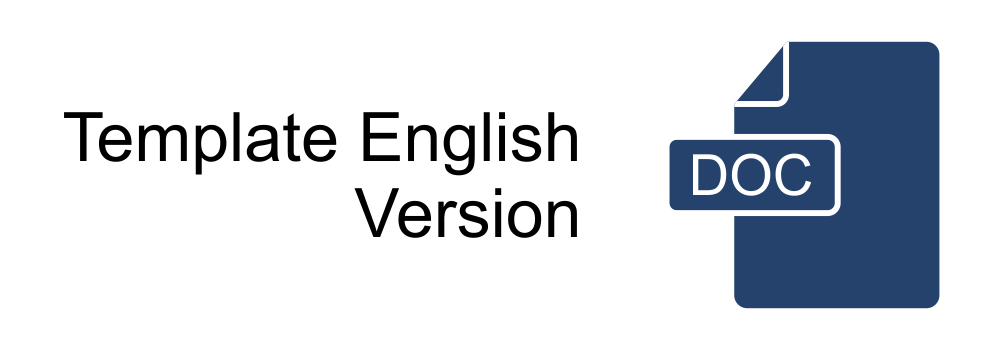Health Protocol Campaign in The City of Malang as a Covid-19 Pandemic Mitigation: A Study of Linguistic Landscape
Abstract
This study aims to examine the portrait of linguistic landscape (LL) and its social aspects as reflected in the health protocols (Prokes ‘Protokol Kesehatan') banners and billboards in public spaces in Malang. Thus, it attempts to answer two questions: (1) what are the perceptions and attitudes of the people of Malang city towards the various calls for health protocol? and (2) how effective are the calls in impeding the outbreak of Covid-19 in Malang city? According to Backhaus (2006), several important criteria to consider to ensure valid data collection in LL study are geographic location, characteristics of banners and billboards, and what counts as monolingual and multilingual banners. The research areas were therefore divided into two: (1) some residential areas and shopping centers in Malang city to collect non-official signs and (2) city centers which include major arterial roads, Pasar Besar area, city square, and areas around the city hall to collect official signs. Data in the form of photos of billboards and banners were taken using a mobile phone camera between May and July 2021. The curated 63 photos of Prokes banners and billboards were then qualitatively analyzed following the LL framework (Backhaus, 2006; Spolsky & Cooper, 1991) and triangulated with data from interviews. Adopting random sampling technique, 11 interviewees belonging to the middle class and 10 from the lower class were chosen to determine public perceptions of the effectiveness of the calls. The results show that the non-official banners featured more multilingual banners than did the official ones, and hence amplifying the results of the existing research on LL. As for the respondents’ perception, official banners were more preferable as they used Boso Walikan and were more assertive and illustrative. Although the two respondent groups agreed that the banners were not effective, they had different views about what mediums were more effective. The middle class considered campaigns using social media to be more effective, while the lower class preferred direct counseling.
Abstrak
Penelitian ini bertujuan untuk mengkaji potret lanskap linguistik (LL) dan aspek sosialnya sebagaimana tercermin dalam spanduk dan baliho Protokol Kesehatan (Prokes) di ruang publik di Kota Malang. Dengan demikian, ada dua pertanyaan yang akan dijawab: (1) bagaimana persepsi dan sikap masyarakat kota Malang terhadap berbagai seruan Protokol Kesehatan tersebut? dan (2) seberapa efektif himbauan tersebut untuk menanggulangi penyebaran Covid-19 di kota Malang? Menurut Backhaus (Backhaus, 2006), beberapa kriteria penting yang perlu diperhatikan untuk memastikan pengumpulan data yang valid dalam studi LL adalah lokasi geografis, karakteristik spanduk dan baliho, dan tolok ukur spanduk monolingual dan multilingual. Oleh karena itu, lokus penelitian dibagi menjadi dua: (1) beberapa kawasan pemukiman dan pusat perbelanjaan di kota Malang untuk mengumpulkan rambu-rambu non-resmi dan (2) pusat kota yang meliputi jalan utama, kawasan Pasar Besar, alun-alun kota, dan kawasan sekitar Balai Kota untuk mengumpulkan rambu-rambu resmi. Data berupa foto baliho dan spanduk diambil menggunakan kamera ponsel antara bulan Mei dan Juli 2021. Sebanyak 63 foto spanduk dan baliho Prokes yang terpilih kemudian dianalisis secara kualitatif menggunakan kerangka LL (Backhaus, 2006; Spolsky & Cooper, 1991) dan ditriangulasi dengan data hasil wawancara. Mengadopsi teknik random sampling, 11 orang dari kelas menengah dan 10 orang dari kelas bawah dipilih untuk diwawancarai guna memahami persepsi mereka tentang efektivitas himbauan Prokes. Hasil penelitian menunjukkan bahwa spanduk tidak resmi menampilkan lebih banyak spanduk multibahasa daripada spanduk resmi, dan dengan demikian memperkuat hasil penelitian terdahulu tentang LL. Adapun terkait persepsi responden, spanduk resmi lebih disukai karena menggunakan Boso Walikan dan lebih tegas serta ilustratif. Meskipun kedua kelompok responden sepakat bahwa spanduk tidak efektif, mereka memiliki pandangan yang berbeda tentang media apa yang lebih efektif. Kelas menengah menganggap kampanye menggunakan media sosial lebih efektif, sedangkan kelas bawah lebih menyukai penyuluhan langsung.
Keywords
Full Text:
PDFReferences
Ardhian, D., Purnanto, D., & Yustanto, H. (2021). Religious performance in Malang, Indonesia: Linguistic landscape on worship sign. Journal of Language and Linguistic Studies, 17(2), 983-1000. https://doi.org/10.52462/jlls.68
Azmi, F. (2021). Ini 5 Daerah Tertinggi Kasus Positif COVID-19 di Jatim. 18-20. https://news.detik.com/berita-jawa-timur/d-5325835/ini-5-daerah-tertinggi-kasuspositif-covid-19-di-jatim
Backhaus, P. (2006). Multilingualism in Tokyo: A Look into the Linguistic Landscape. International Journal of Multilingualism, 3(1), 52-66. https://doi.org/10.1080/14790710608668385
Ben-Rafael, E. (2008). A Sociological Approach to the Study of Linguistic Landscapes. Linguistic Landscape: Expanding the Scenery, 40-54. https://doi.org/10.4324/9780203930960
Ben-Rafael, Eliezer; Shohamy, Elana; Hasan Amara, Muhammad; Trumper-Hecht, Nira (2006). Linguistic Landscape as Symbolic Construction of the Public Space: The Case of Israel. International Journal of Multilingualism, 3(1), 7-30. https://doi.org/10.1080/-14790710608668383
Calvet, L. J. (1990). Des Mots Sur Les Murs: Une Comparaison Entre Paris et Dakar. Des Langues et Des Villes (Actes Du Colloque International à Dakar, Du 15 Au 17 Décembre 1990), 73-83.
Cojocaru, S., Bragaru, C., & Ciuchi, O. M. (2012). The Role of Language in Constructing Social Realities. The Appreciative Inquiry and the Reconstruction of Organisational Ideology. Revista de Cercetare Si Interventie Sociala, 36 (March 2012), 31-43.
Collins, J., & Slembrouck, S. (2007). Reading Shop Windows in Globalized Neighborhoods: Multilingual Literacy Practices and Indexicality. Journal of Literacy Research, 39(3), 335-356. https://doi.org/10.1080/10862960701613128
covid19.go.id. (2021). Rumah Sakit Tambah Alokasi Kamar Pasien COVID-19 Hingga 40%. https://covid19.go.id/p/berita/rumah-sakit-tambah-alokasi-kamar-pasien-covid-19-hingga-40
Hastings, A. (2012). Textual and Linguistic Analysis. In: Smith, S.J. (ed.) International Encyclopedia of Housing and Home, Vol. 7. 190-195. https://doi.org/10.1016/B978-0-08-047163-1.00690-1
Haynes, P. (2012). Welsh Language Policy: A Study of the Linguistic Landscape at Cardiff University. Unpublished Dissertation: University of Birmingham, Wales.
Itagi, N. H., & Singh, S. K. (2002). Linguistic Landscaping in India with Particular Reference to the New States. Proceedings of a seminar. 255. Retrieved from http://books.google.ca/books?id=h-D9iAAAAMAAJ&q=Itagi+and+Singh+2002&dq=Itagi+and+Singh+2002&hl=&cd=5&source=gbs_api
Infocovid19.jatimprov.go.id. (2021). Jatim Tanggap Covid-19 http://infocovid19.jatimprov.go.id/
Landry, R., & Bourhis, R. Y. (1997). Linguistic Landscape and Ethnolinguistic Vitality: An Empirical Study. Journal of Language and Social Psychology, 16(1), 23-49. https://doi.org/10.1177/0261927X970161002
Mauliddian, K., Nurhayani, I., & Hamamah, H. (2022). Penanda Publik Bahasa Kawi di Kota Probolinggo: Kajian Lanskap Linguistik. Ranah: Jurnal Kajian Bahasa, 11(1), 130. https://doi.org/10.26499/rnh.v11i1.2716
Paramarta, I. M. S. (2022). Balinese Language on the Street Signs in Singaraja Town, Bali: A Linguistic Landscape Analysis. Ranah: Jurnal Kajian Bahasa, 11(1), 120-129. https://doi.org/10.26499-/rnh.v11i1.4197
Purnanto, D., Yustanto, H., Ginanjar, B., & Ardhian, D. (2021). English Operation in Public Space: Linguistic Landscape in Culinary Business of Surakarta, Indonesia. Journal of Language and Linguistic Studies, 18(1), 345-360. https://doi.org/10.52462/jlls.186
Khotimah, T. K., & Sumarsih, N. (2022). Revitalization of Javanese in School Environment in Era 4.0: Linguistics Landscape Perspective. Retorika: Jurnal Bahasa, Sastra, dan Pengajarannya, 15(1). https://doi.org/10.26858/retorika.v15i1.23822
Sneddon, J. (2003). Diglossia in Indonesian Introduction. KITLV Journals, 159(4), 519-549. https://doi.org/10.1163/22134379-90003741
Spolsky, B., & Cooper, R. L. (1991). The Languages of Jerusalem. Clarendon Press.
Takaeb, A. E. L. (2019). Gambaran Efektivitas Spanduk sebagai Media Komunikasi Kesehatan di Desa Oemasi. Jurnal Communio, 8(1), 1277-1283.
Wang, J. (2019). Linguistic Landscape on Campus in Ponorogo (a Case Study of Signs in Ponorogo Universities). Edupedia, 3(2), 130. https://doi.org/10.24269/ed.v3i2.299
Yannuar, N., & Tabiati, S. E. (2016). Public signs in the city of Malang: A study on the linguistic landscape of Indonesia. The Changing Face of Language Pedagogy: Exploring Linguistics and Literature, June, 123-138.
Yannuar, N. (2019). Bòsò Walikan Malangan: Structure and Development Of A Javanese Reversed Language. Leiden University. https://doi.org/10.17510/wacana.v21i1.879
Yavari, S. (2012). Linguistic Landscape and Language Policies: A Comparative Study of Linkoping University and ETH Zurich. Linguistic Landscape, (July), 64.
Zentz, L. (2015). "Study" the Foreign: Shifting Javanese Language Ecologies in Post Modernity. Journal of Linguistic Anthropology. 24(3), 339-359. https://doi.org/10.1111/jola.12062
DOI: https://doi.org/10.26499/rnh.v11i2.5177
Refbacks
- There are currently no refbacks.








